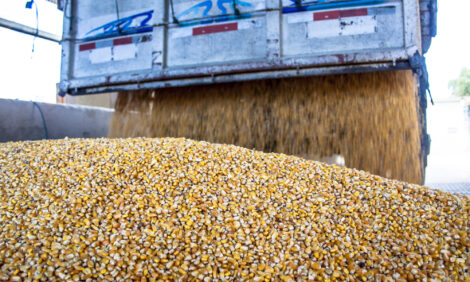



Mexico's poultry producers gear up for growth - USDA FAS
Rising domestic demand driving productionMexico’s poultry production continues to climb, fuelled by rising domestic demand and steady investment in farm efficiency, according to a recent market report from the US Department of Agriculture's Foreign Agricultural Service (USDA FAS).
In 2025, chicken meat production is projected to reach 4.1 million metric tons (MMT), up 2% from the previous year. This growth reinforces Mexico’s position as the world’s sixth-largest chicken meat producer.
Population growth, household consumption and strong demand from the hotel, restaurant and institutional (HRI) sector are all contributing to the rise. The country now produces roughly 80% of its chicken meat needs domestically, with national output expanding over 30% in the past decade.
Efficiency up, mortality down
Improvements in biosecurity and animal husbandry have played a key role in this growth. In 2024, producers reported higher survival rates among hatchlings, thanks in part to better disease control and upgraded feed quality. These gains are expected to boost production again in 2025.
Feed costs remain the largest expense for producers—around 75% of total production costs—and Mexico continues to rely heavily on imported yellow corn, mostly from the United States. In 2024, favourable exchange rates and relatively low international prices gave producers a break, enabling them to maintain consistent, high-quality feed supplies for broilers and breeders alike.
Commercial feed production also saw steady growth, particularly in the broiler segment. Better nutrition at every stage of the production cycle has translated into healthier flocks and more efficient weight gain.
Geographic concentration and security concerns
Production remains highly concentrated in a handful of states. Veracruz leads the nation in chicken meat output, followed by Aguascalientes, Jalisco and Querétaro. These four states, along with Durango, Chiapas, Guanajuato and Puebla, account for 70% of Mexico’s total chicken meat production.
However, challenges persist. Public insecurity—including theft and extortion—continues to threaten the industry. The poultry supply chain is particularly vulnerable to criminal activity, which adds cost and risk to operations, especially in high-production areas.
Biosecurity measures intensify
Disease prevention remains a top priority for the industry. In 2024, there were no reported outbreaks of highly pathogenic avian influenza (HPAI), but producers remained on high alert. Biosecurity protocols were strengthened, with a focus on separating breeder, hatchery, layer and broiler operations to limit potential disease spread.
A noticeable trend has been the relocation of breeder flocks to more remote areas to reduce exposure to avian diseases. However, avian infectious bronchitis (AIB) did affect some flocks in 2024, resulting in economic losses and underlining the need for improved surveillance and reporting systems.
Weather and infrastructure readiness
Weather variability is another concern, but most producers are well-equipped to manage it. Anticipated drought conditions and warmer temperatures in early 2025 are unlikely to disrupt production significantly. Poultry operations typically feature climate-controlled environments, access to stored water, and benefit from subsidised electricity rates for agriculture.
These preparedness measures allow producers to continue operating even under adverse weather conditions, helping ensure a reliable supply of chicken meat to meet growing national demand.
Looking ahead
As production trends upward, Mexico’s poultry sector is poised for continued expansion. Despite the pressure from disease threats and insecurity, producers are adapting with a mix of innovation, investment and strong management. With domestic demand showing no signs of slowing, poultry production remains a central pillar of Mexico’s agri-food economy.









